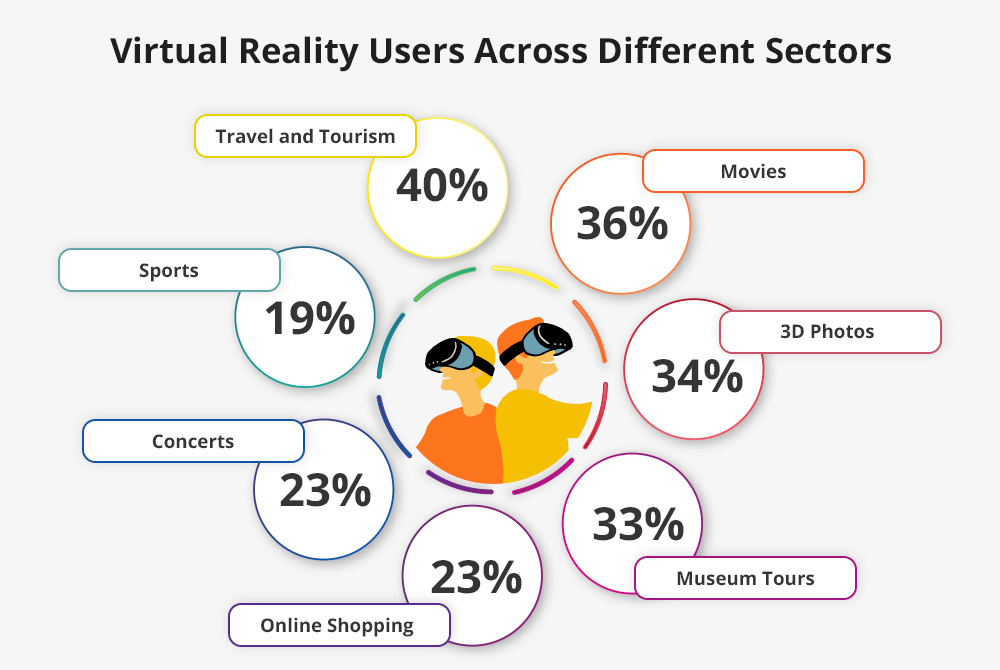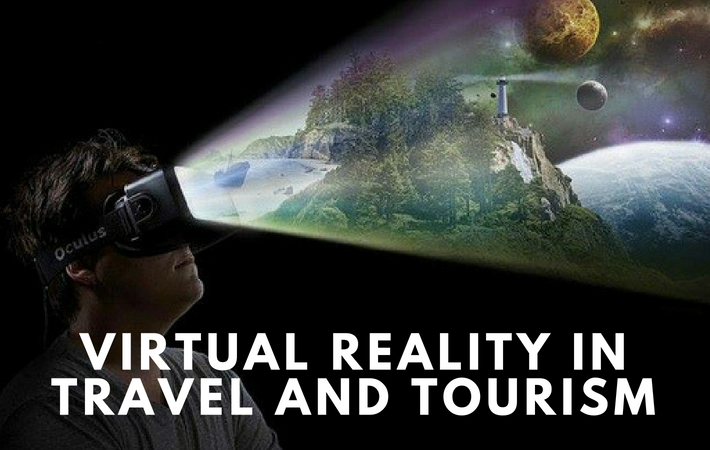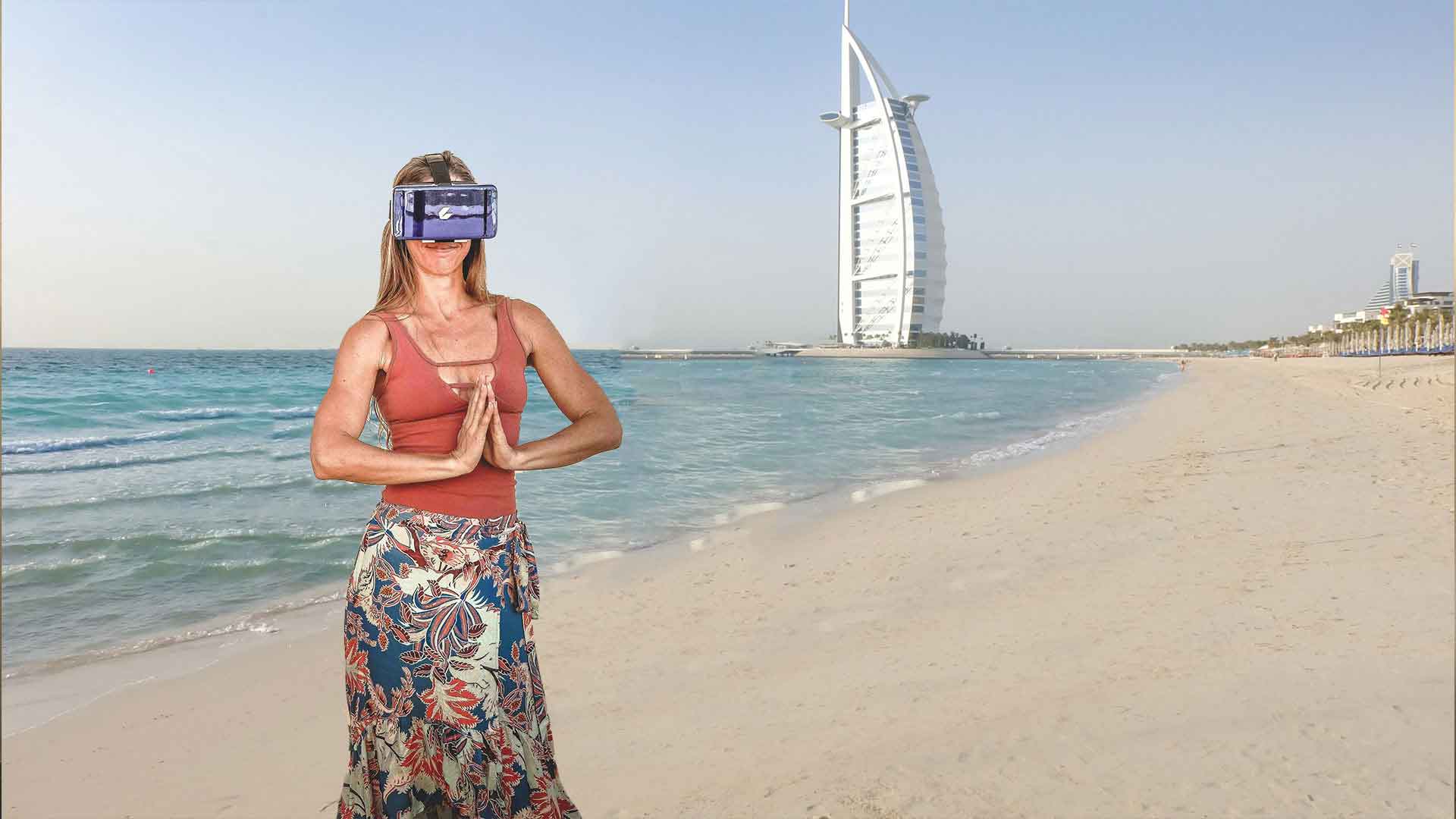In layman language, “Virtual” means artificial or digital and “Reality” is what we experience as a human. Virtual reality makes possible to experience anything, anytime, anywhere. Virtual Reality provides us with an artificial environment which is experienced through sights and sounds which itself is provided by a computer and our actions determine what happens in the environment. As kids, we were told about the five senses that we possess (taste, touch, smell, sight, and hearing). However, neurologists have identified 21 senses and with these senses, we experience the virtual environment around us. In technical terms, Virtual Reality is a three-dimensional, computer-generated environment which can be experienced by a person just like the real world. The Virtual Reality global market is projected to reach USD 48.5 billion by 2025 from USD 1.8 billion in 2016.
How Virtual Reality Works?
VR App Developers make two different images or models of the same object placed at angles that are slightly different from each other, one for each eye. Then we have to use a VR hardware like Google Cardboard or Oculus Rift to have a 3D view of that image or model.
Thus, we can say that VR interfaces are growing rapidly and taking the technology by storm. Developers would need to make all sites and apps responsive as per these interfaces too, like they do it for mobiles and tablets presently. VR App Developers help in integrating VR concepts different mobile applications of Virtual Reality.

Virtual Reality in Tourism
Travel and tourism industry has started adopting the Virtual Reality technology to maximize customer engagements and enhance the customer-centric marketing methods. Offering the modern customers a chance to virtually visit a place before making their final decision is definitely a game changer. For marketing and promotions, VR media makes a huge difference. Virtual reality tourism industry has made travelling accessible to every individual with the help of simulators. Therefore, people who cannot travel due to any reason can still enjoy the same experience in a safe and protected environment.

Apparently, the VR technology requires huge investments. Due to which small-scale travel companies hesitate to completely take advantage of the technology. However, the travel agencies that are already leveraging it are earning huge profits and maximizing their returns on investment. In a recent study, it was found that 80% of people who experienced virtual reality to explore a destination felt “transported to another world”. Thus, travel and tourism agencies need to embrace this technology completely to gain a competitive edge. To understand it even better, here are a few benefits of Virtual Reality in Tourism:
Travelling before actually travelling
Earlier, travellers used to research about places they wished to travel. Through photos, videos and movies, they used to make their itinerary to visit the places that attract them the most. However, it is disappointing for them when the places did not turn out as they looked in photos and videos. Virtual Reality in tourism is the resolution to all such issues. It lets the enthusiasts explore the destinations before actually buying a package. Thus, a journey becomes more manageable and turns out exactly how the enthusiasts want it to.
Exploring Hotels
Hotels play a vital role in travel and tourism. If tourists are able to see the galleries, rooms, bathrooms and views before booking, they will not be disappointed when they check in. Thus, 360 degree views through VR help in finalizing hotels.
Meeting the needs of the modern customer
The modern customers are not short of choices, thus they choose wisely. They prefer the convenience and do not hesitate in paying more. Thus, virtual reality helps in meeting the rising expectations of these customers. 73% of Gen-Z internet users are interested in VR and that clearly explains why it is suitable for your industry.
Innovations in Virtual Reality in Travel
Google Street View
Google’s Street View is the concept of viewing places at a 360-degree view. Google Cardboard helps in integrating the View app using which the users can visit different places while sitting at home. It helps to plan your travelling better so that all your money is worth spending.
Marriott’s Vroom Service
Marriott is a luxurious hotel chain that has started offering virtual reality service to its guests at selected destinations. Using VR headsets, the guests are able to take a look at travel destinations in Beijing, Chile and other regions. The hotel chain emphasizes on better customer experience, especially to the tech-savvy millennials and Gen Z.
Booking Engine
The booking engine is yet another application of Virtual Reality in tourism. It enables travel enthusiasts to select destinations on a virtual globe and book directly, with the use of VR glasses and gloves. Through the virtual reality booking engine, users can rent cars, book flights and plan itineraries in a better way.
Virtual Vacations
Travel agencies are redefining vacations with their huge libraries of virtual travel media. With time we can only see more companies such as YouVisit, Littlstar, and From1 and we can expect drastic changes in the industry on a global scale.
Bottomline
Virtual Reality advancements will continue to surprise and possibilities of virtual reality in the tourism industry are endless. The early adopters and innovators can definitely have an edge over others. So, invest in the technology that could transform your business and shoot up your revenues in no time.







I still feel, no virtual experience can match the real experience but it can surely help in making the final decision. Your blog has amazing content. Thanks for the information.
The tourism industry is doing wonders with this sick technology. It is actually mind blowing.